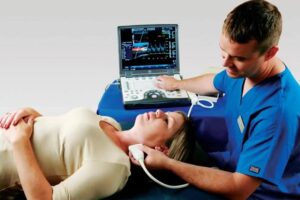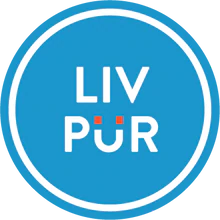This is a sponsored post with Life Line Screening. Any opinions are 100% my own.
What is Carotid Artery Disease?

Carotid artery disease is also known as carotid stenosis. It occurs when plaque builds up in the carotid arteries. You have two carotid arteries, one on each side of the neck, which carry blood to the brain. Plaque is made up of cholesterol, calcium, and other cellular substances and it can collect in the arteries, making the arteries stiffer and narrower. This is defined as carotid artery disease, which is a form of atherosclerosis. Clogged arteries do not deliver blood and oxygen as well as they should to the brain. Carotid artery disease develops slowly over time as people age, and most people have no symptoms. In fact, for 4 out of 5 people who have a stroke, the first symptom they experience is the stroke.
People who have carotid artery disease, which is a form of atherosclerosis, can often have plaque buildup in arteries in other parts of the body as well. Carotid artery disease is a major risk factor for strokes because plaque can either break off and travel to the brain, or it can block blood flow to the brain, resulting in a stroke that could cause permanent brain damage or death
What is Carotid Artery Disease Screening?
The best way to check for carotid artery disease is to undergo a screening. Carotid artery screening is conducted via a non-invasive color flow ultrasound in which a technician creates a series of images of the carotid arteries while also measuring blood flow through them. After a board-certified physician reviews your results from the screening, the results letter will indicate the degree of plaque buildup for each of your two arteries on a scale of normal (no plaque identified and blood flow is normal) to significant (large amount of plaque identified, and blood flow is significantly reduced).
This allows people with normal, mild, or moderate carotid artery blockage to compare the results of each screening to previous screening results, determining if the plaque buildup has gotten worse. Plaque buildup can be progressive without treatment, getting worse over time. Early identification of risk, before symptoms are present, allow you and your doctor to take action if necessary. Plaque buildup (atherosclerosis) can occur in any of the arteries in the body. This is one reason the simple ultrasound of the carotid arteries is so valuable: it helps people understand their risk of developing atherosclerosis in other areas of the body as well.
Physicians who are on the front lines of vascular disease believe in these tests—9 out of 10 cardiovascular doctors support preventive health screenings for cardiovascular disease among people with key risk factors.
What Happens After My Carotid Artery Disease Screening?
If the screening report identifies the buildup of plaque in your carotid arteries, schedule an appointment with your doctor to review the results. Your doctor may order additional tests to confirm a diagnosis of carotid artery disease.
Depending on the severity of disease, treatment can include changes to your lifestyle, such as reducing the amount of saturated fat and sodium in your diet, exercising regularly, and monitoring your blood pressure and cholesterol levels. Your doctor may also prescribe blood thinners or other medications to prevent the blood from clotting.
In cases of severe disease, or if treatment is ineffective, you may need to undergo a surgical procedure called a carotid endarterectomy. This procedure removes the plaque from the arteries to restore normal blood flow and reduce the likelihood of a stroke. Receiving a screening before you experience symptoms helps reduce the chances that surgery will be necessary by detecting disease before a 50% blockage develops.
If your doctor determines that a carotid endarterectomy is not appropriate for you, carotid angioplasty and stenting is often recommended as an alternative. The minimally-invasive procedure can typically be performed on an outpatient basis. The doctor will first perform an angioplasty, in which a balloon is inserted into the narrowed artery. The balloon is then inflated to widen the artery. A metal-mesh tube, known as a stent, is inserted to keep the artery open after the procedure is complete.
How is the Screening Performed?
The non-invasive ultrasound screening for carotid artery plaque is painless and does not require the removal of any clothing. While you recline on your back, the technician applies a clear gel to your skin. The gel reduces the interference from surrounding air that could affect the clarity of the image produced by the transducer. The technician moves the transducer over your skin to capture a series of images. After the exam is complete, the gel is easily removed and leaves no marks on your skin.
We're an affiliate. We hope you love the products we recommend! Just so you know, we may collect a share of sales or other compensation from the links on this page with no additional cost to you. Thank you if you use our links, we really appreciate it! Read more











